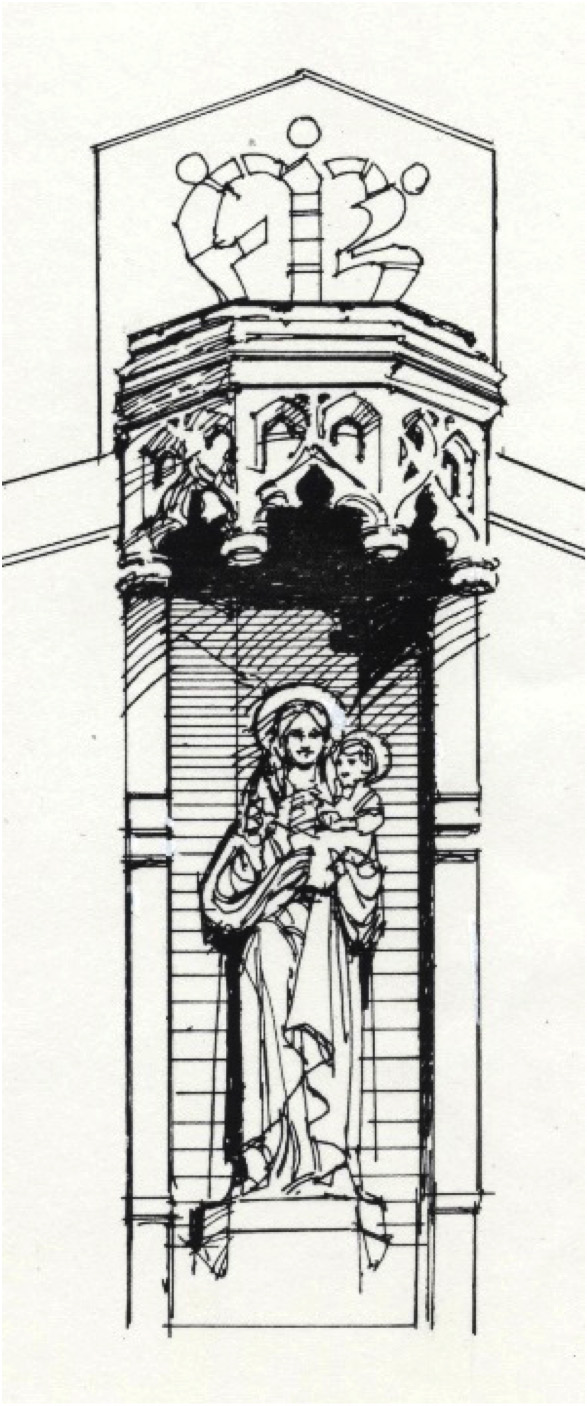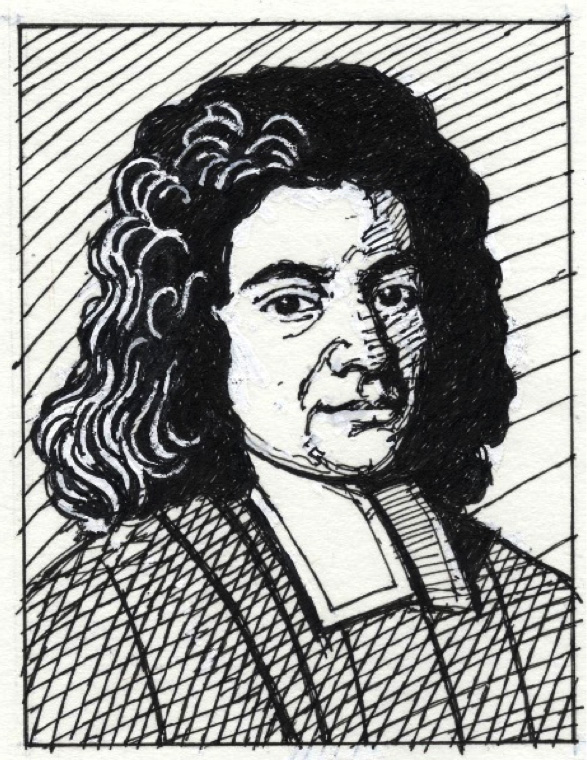Welcome to St Mary’s Coddenham
We hope that you will enjoy its history and beauty and that you will feel thoroughly “at home” here in our Father’s House.
Welcome to a living, working building, which is no mere ancient monument but is still in regular and active use for Christian worship and witness – the purpose for which it was built!
Generations of Coddenham folk have altered, beautified and used it – and have found God to be real to them in this Holy Place, made sacred by 900 years of prayer and care.
Please pray for those whose Spiritual home this is – and please accept their gratitude for any contribution that you have kindly given to help them maintain St Mary’s intact and beautiful.
May God Bless You
A Short History of St Mary’s
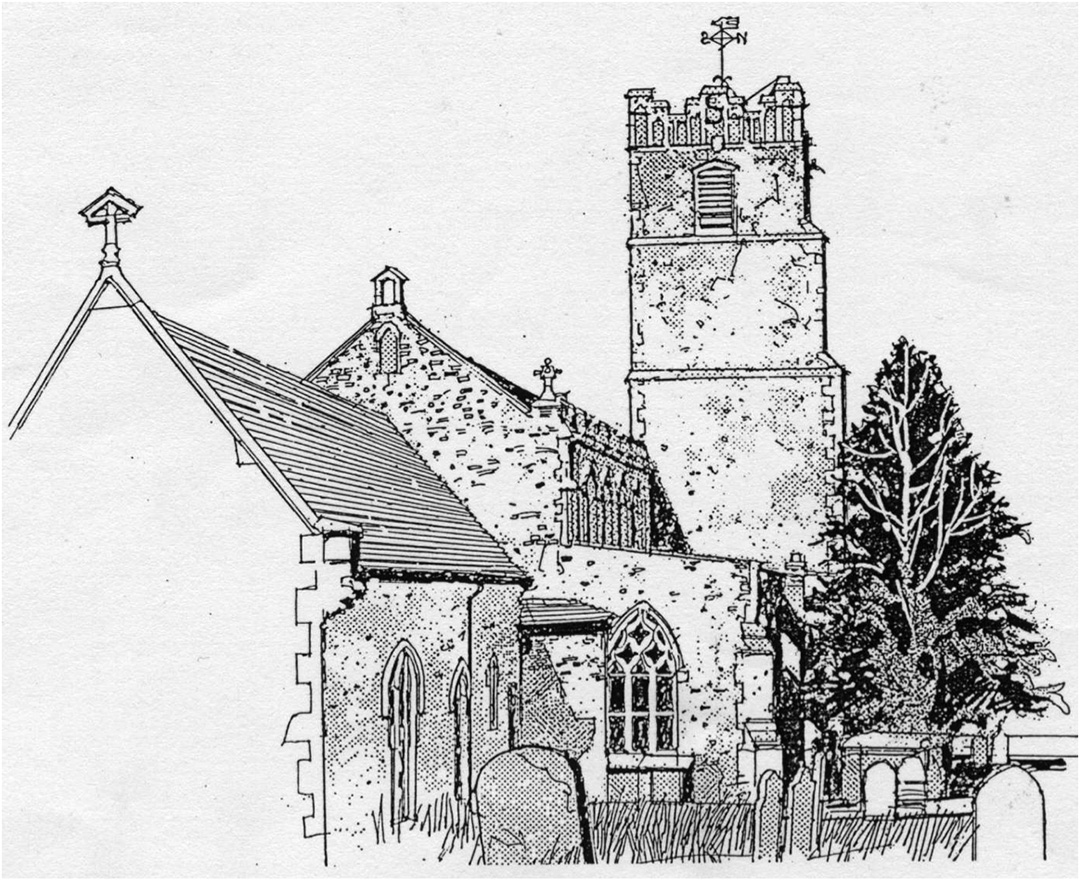
EXTERIOR ARCHITECTURE
The Churchyard, long since closed for interment except following cremation, sets off the church to perfection. It is carefully managed for wildlife.
To move round the outside of an ancient church is to gain important clues to its evolving. The visitor is invited to start about halfway along the north side, standing well back. Please take care in slippery conditions.
Late C11 Norman: the slit window in the western section of the Chancel wall shows this to be an early surviving wall. Coupled with the west wall of the nave (to be examined later) this confirms that there was a substantial building on precisely this site from shortly after the time of William the Conqueror.
The first half of the C13 (Early English):The base of the tower was built, and the present Nave & Aisles had probably begun to take shape.
1270 -1280 (Early English): the Chancel was extended to the visitor’s left – eastwards – to its present length.
C14 (Decorated): several windows show the style of this period, which (with interior features) confirms that by this date the plan of the church was very much as it is today.
Late C15 & early C16 (Perpendicular): the Aisles were raised, and the crenellated Clerestory built to lighten the Nave; its windows and black flushwork flint panels were a sign of prosperity. Two large windows with horizontal bars (transoms) also gave more light in the Chancel; the tower was given additional stages. The previous vestry (1829-93) used to be on this side of the Chancel, as is confirmed in an old photograph. A closer look at the north side also reveals great variety in style and period of windows. Two, including the end window (east) of the north Aisle with its netlike “reticulated” tracery of c1330 have been partially obscured by the later roodloft staircase turret of mellow Tudor brick. (Such stairs became obsolete with the removal of roodlofts in the 1540’s).
High up on the Clerestory, the inscriptions proudly facing the village are:
- IHS (monogram for Jesus)
- Orate pro Animae Johannis Frenche et Margarete (see Appendix 2)
- Another IHS pattern resembling a portcullis
- M (for Mary, our Lady) with carved patterns.
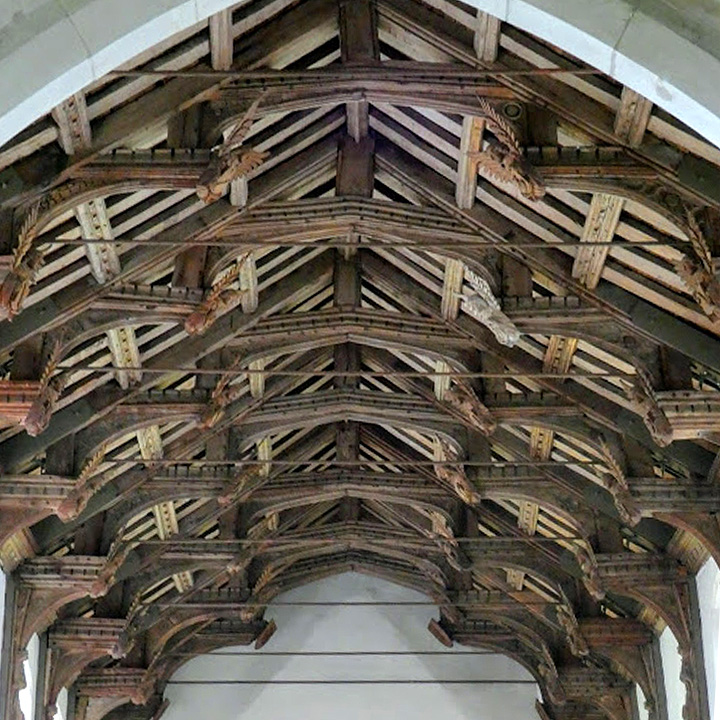
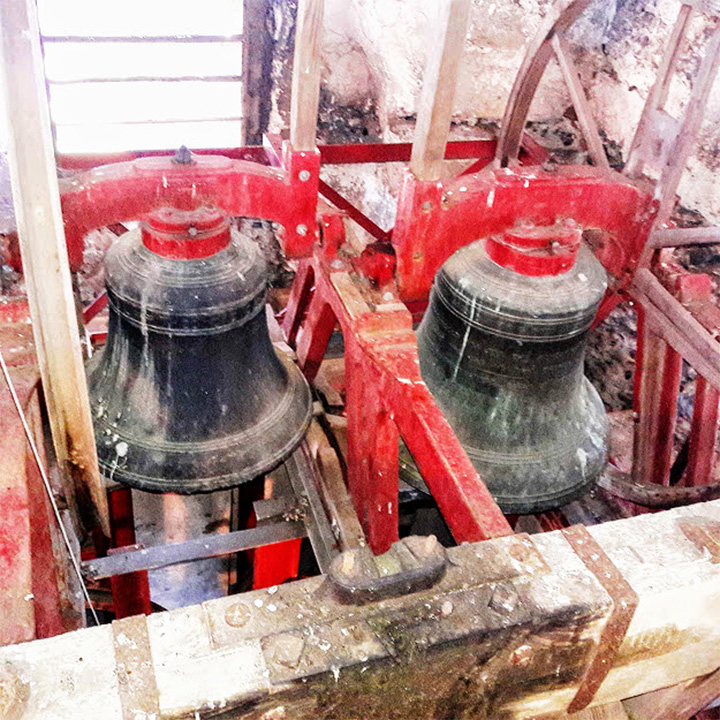
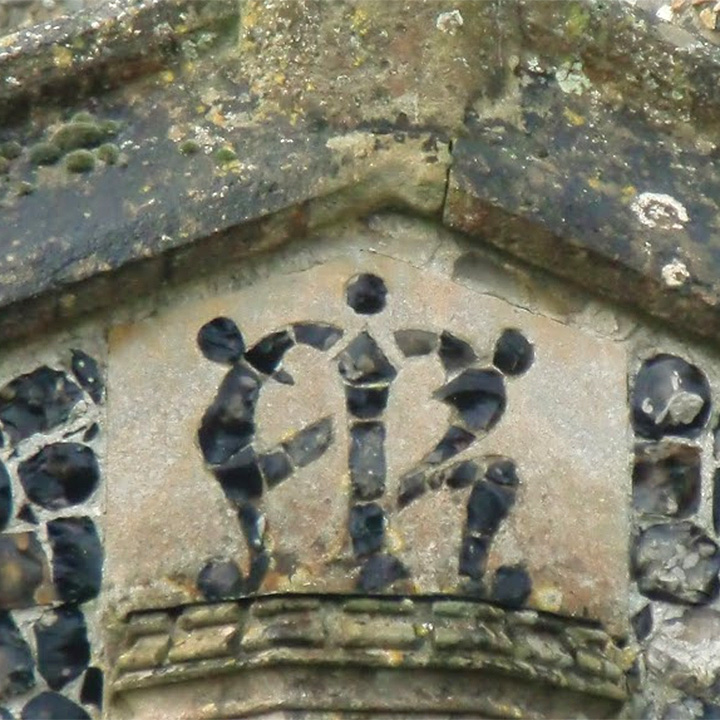
East End
As one moves round to the east end of the church, the C14th window is dominant. Of the corbels, the one on the right was in 1893 said to be of Stephen Langton, Archbishop of Canterbury (1207-29). A corresponding head, carved to match, is a likeness of Edward White Benson, also Archbishop of Canterbury (1883-96). One can see confirming evidence of the raising of the roof, since the pitch of the earlier roof has left clear signs on the end wall of the nave, above the lower chancel roof. At the gable end of the Nave is a simple C15 bell-turret for the Sanctus bell (long since missing) – one of only nine Sanctus-bell turrets in Suffolk.
South Side
Round to the south side of the Chancel, one sees first a window possibly 1270-80, and then the Vestry. This was designed by Ernest Geldart in 1893 and incorporates the C14 Priests Doorway and the central window (late C13), both moved out from the south wall of the Chancel. The large two-light window, just west of the Vestry, is probably C14th. The east window of the south aisle is 1320-30, and has unusual tracery and very beautiful.
The wall tablet, formerly the top of a table-tomb, is to the memory of Matthias Gillet alias Candler (see Appendix II)
As one moves back from the church, the south Aisle is seen to be most notable for the crenellated flushwork parapet and gargoyles (on the extended rainwater spouts). Here there are not five but seven Perpendicular windows and the parapet away from the village is plain without symbolic motifs. At lower level, of the two windows, the first is probably 1380-1400 and shows the transition from the Decorated period to Perpendicular; the second dates from 1320-30 with Curvilinear tracery. The South Door arch is C14th, and the next two windows have the simple “Y” tracery of c1300. Thus we have in this short space a further chance to compare styles, and the advance over a century.
West End
The core of much of the westwall of the nave may well be earlier, but the three-light window with decorated tracery dates from 1320-30. Note the infilling at the apex from the time the roof was heightened. In the flint rubble of the wall, the eye quickly picks out Roman brick and tile. It was quite usual for material to be re-used after local buildings were no longer occupied and this part of Coddenham parish at the junction of Roman roads is widely thought to have been a Roman settlement.
The Tower seen from its western side has a satisfying loftiness, though its face is plain. The feature that is unique in the county is its position, offset to the north of the west end of the nave, although not serving as a porch. Structural reasons seem the most likely. The lancet windows confirm the age of the lower part, with upper stages added during the C15th. The top window matching the lancets is of Tudor brick. A flushwork parapet with stepped crenellations, with heads and gargoyles caps the tower. There is no record of the gift of the Clock, which faces the village.
The North Porch
This was probably the final part of the medieval church. Unusually, it is placed obliquely, with its entrance facing the village, perhaps to stress its welcome. Its face has flint flushwork. In the last four years of the C19th, local resident The George Murrell Lummis carved the woodwork throughout the porch in earlier style as part of its restoration.
The visitor is invited to enter the church by the C14 doorway, noting that the keyhole in the (later) door is reversed.
INTERIOR ARCHITECTURE
The light and airy interior of St Mary’s has architectural features from many periods, including our own times.
The Nave & Aisles date from around the mid C14th. The arcades have octagonal piers with moulded capitals and bases. Note the graffiti, some of considerable age, in the stonework of the piers. The two tower arches, being plainer, are probably slightly earlier. The Chancel contrasts with the main body of the Church, and its late C13th extension renders it long in relation to its width. As is not unusual, it is out of line a few degrees to the north. Two possible alternative reasons are offered. When the Nave & aisles came to be rebuilt, the Norman Chancel being retained, the builders may have taken into account the slightly sloping site in altering the orientation. A more poetic explanation is that it was deliberately constructed out of line to represent the head of Christ falling to one side on the Cross (a “Weeping Chancel”).
It was during the incumbency from 1481 of Florence Wulley, Bishop of Clogher, that the Clerestory and new nave roof were added. This heightening of the Nave is attributed to Johannis French (see Appendix II). Above the west window, the lower pitch of the earlier roof can again be plainly seen. The open carved roof with double hammer beams and wallposts carved into figures date from this period and is one of the glories of the church. The angels were all renewed in about 1890, the originals having been mutilated, almost certainly the result of the Puritan “purge” of 1643-4. There is no evidence that this was done on the orders of the Parliamentary iconoclast William Dowsing. His records refer only to the removal of three crosses from the “steeple” (i.e. tower) and one from the Chancel. (Dowsing lived for some 17 years at Baylham House in the Parish of Coddenham, and at least six of his children were baptised here.)
The restoration of the nave and aisle roofs was the first part of a thorough restoration of the church (apart from the chancel and porch), which commenced on 1st March 1886. The architect was the versatile E. F. Bisshopp of Ipswich, whose designs may be seen in several East Suffolk churches.
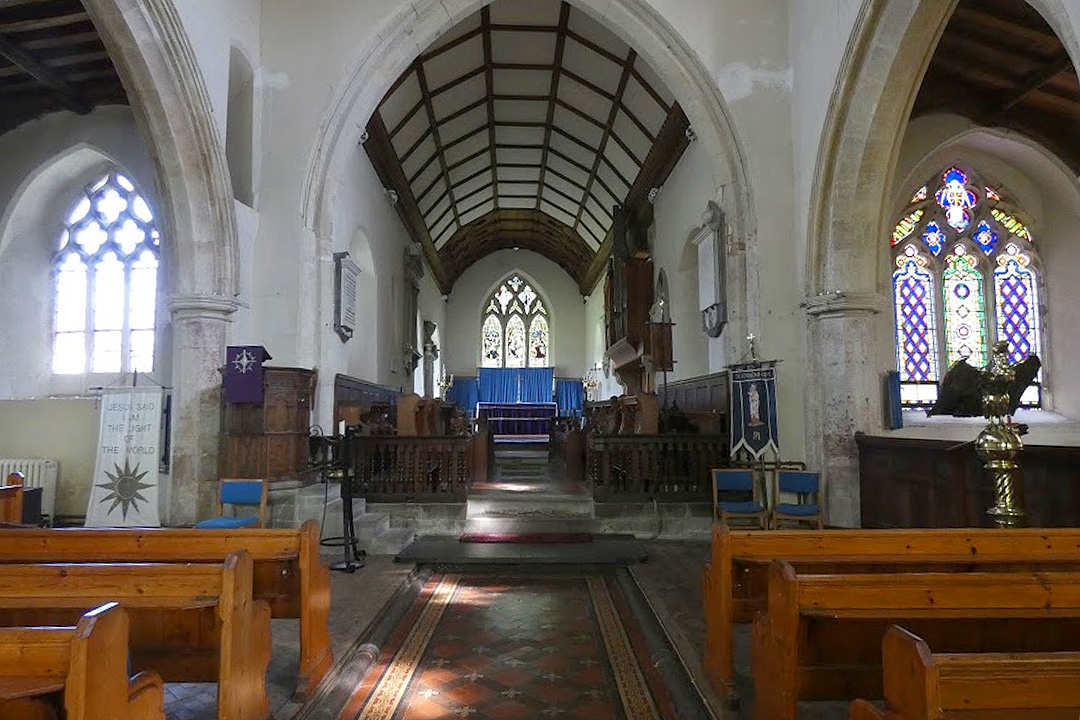
The Pulpit
The fine Jacobean Pulpit is said to be one of the smallest in the county. It is part of the 3-decker with sounding board that was dismantled in the restoration of 1893 and placed on its present limestone plinth.
The Nave
Opposite in the nave stands the C19th brass eagle, symbolic of the responsibility for the Bible to be not only read but also spread.
The panelling enclosing the side-Chapel incorporates seven tiny carvings representing biblical scenes recognizable despite earlier damage. An eighth has been removed.
Until the turn of the century the body of the church contained the old box-pews. These were then replaced by chairs, which in turn were succeeded in 1979 by the present benches, presented by the late Mr. & Mrs J Clift, having become redundant at St Mary’s Church in Colchester. There are also three more small benches made from the end attachments/servants` seats from the same church. The colourful kneelers (over one hundred) were worked by local residents whose names are on the underside. Most were dedicated in 1986.
Towards the back of the Nave are two mutilated benches, which date from the C15th. The panelling dividing the nave here from the aisle has rich carving, believed to have formed part of the rood screen, which later adorned the Shrubland pew. Above, on the west wall hang two coloured plaster panels (depicting the Deposition and Annunciation), originally forming the Reredos behind the high altar, the gift of Mr. Harry Wyles, brother of the then Vicar c1896.
Six Hatchments hung around the church are of the Bacon and Longe families, all with the motto “In heaven peace”.
North Aisle
Note the C15th & C16th wood carving of the roof, with cornice at the top of the wall, leaf scrolling and shields. The name William Cooke is carved here, and it is presumed that it was he who is responsible for this roof (see Appendix II).
A window in this Aisle shows heraldic quartering of several inter-related Suffolk families: Middleton, Fowle, Acton, Lee, Broke, Parker, Boues, Beaumont, Vesey, Cutler & Broke-Middleton.
Rood Screen
Tudor brick, as outside, features at the entrance to the rood-loft stairs which led not only to the rood-screen across the Chancel-arch, but also to a parclose Screen which once enclosed a North Chapel within this Aisle. Two pillars show the position of the fixings. What was left of the former rood screen fell into dis-repair many years ago. At the time of the late Victorian restoration the intricate carving and Tudor painted gesso panels were beyond repair, except for those carvings now incorporated in the panelling at the west end near the font. (Others have been retained in store.)
The ironbound C14th Parish Chest was the equivalent of a modern strongbox, for storing both documents and valuables of the parish. In such chests, access required keys held by the Incumbent and two Churchwardens to three locks, although this chest has five locks.
The painting “Ecce Homo” (Behold the Man – John 19.5) is of the Dutch School probably after Caravaggio. Bought by the Revd Nicholas Bacon in the late C18th, it was originally hung above the high altar.
Chancel
The shape, long and fairly narrow, has already been noted and has been unchanged for over 700 years. Major restoration was undertaken in 1893 to the designs of the Anglo-Catholic priest – architect The Revd, Ernest Geldart, rector of Little Braxted, Essex, who adorned churches with the most lavish craftsmanship and decoration. Here he was rather subdued, but created the chancel’s wagon roof, the vestry, chancel floor, a reredos of oak and alabaster cross (dismantled), the pulpit base and, in 1898, restored the porch. At this time the present clergy vestry was built on the south side, using some of the features from the south wall and the vestry on the north side was demolished. The small Norman slit window was then discovered, and glass fitted. The east window was also fitted with stained glass. The group of features on the south wall of the Sanctuary, by contrast, probably date from the late C13th: Piscina, Sedilia (seat) and window.
Three wall monuments are noteworthy: those to Philip Bacon, to the Revd Balthazar Gardemau and his wife Lady Catherine and to the Revd Nicholas Bacon (see Appendix II). On the floor of the north side of the chancel a black marble slab with achievements covers the Bacon family vault. “Sir Nicholas Bacon (grandson of the Lord Keeper of the Great Seal of England in the reign of Queen Elizabeth) digged a vault at Coddenham Church …” (1690). The last interments were Catherine Bacon (1771) and Lady Mary Johnson (1802). There are nine other coffins in the vault in two tiers. An entirely new floor was laid in the Chancel in 1893 and the vault sealed. At the northeast angle of the Chancel were found two stone coffins, of Balthazar Gardemau and Lady Catherine his wife. (It is recorded that the coffin of the former was made 19 years before his death, and that he used to lie in it to meditate upon his mortality!)
Organ
The first known organ in the church was placed in the West Gallery in 1817. There is an interesting account with photographs in the Proceedings of the Suffolk Institute of Archaeology and History for 1996. This was twice briefly re-positioned: first under the west window when the Gallery was removed in 1886 and then at the end of the north Aisle. Finally a new organ chamber combined with the vestry was created off the Chancel and the present instrument installed in 1896, by Norman & Beard of Norwich, which has two manuals, pedals and 12 speaking stops.
The railings at the Chancel entrance are C17th “barley sugar” balusters, as is the rail in the Lady Chapel in the south Aisle. These originally formed a three-sided communion rail at the High Altar. The choir stalls are of several origins. Two stalls with misericords are C15th, as are re-used bench-ends, and a tiny seat. Other choirstalls are late Victorian.
South Aisle
The late Victorian roof has fine carving in it’s arch braces and central bosses. The Lady Chapel here once housed the Shrubland pew, complete with deal floor, fireplace and flue; this was demolished in1920. The present Holy Table (late Jacobean) was originally the High Altar, and the rail too was in the Chancel. It is thought by some that the medieval stone slab on which this side-altar stands was the Mensa Slab of the pre-Reformation Altar, though this must be conjecture unless there are the customary five crosses on the underside.
The coloured Alabaster Crucifix (now in safe keeping) is reputed to have been found in about 1774 in the roof of an old house near the church. It is said that it came from the C12th Cistercian Nunnery – see Appendix I. It seems fairly certain that it remained with the Vicars of Coddenham for over a century, until first positioned as a centrepiece at the High Altar when the Chancel was restored in late Victorian times. see Appendix III.
The east window glass here was given in memory of the younger of the two Middleton baronets. To the south of the side-altar is a C13th traceried window and a splendid C14th piscina with canopy. Do not miss the delightful carvings hung on the panelling.
The Font
At the far end of this south aisle it was carved (in15C style) in 1883, using Ancaster and Mansfield stone, to the designs of Herbert S. Green of Norwich. Note the carved angel above.
Nearby stands the old clock mechanism thought to have been made by John Watts of Stamford, who made many clocks in that region between 1686 and 1707. It was removed in 1945 when a new electric movement made by Gillett and Johnston was supplied.
Tower
From the choir vestry at the base of the tower a wooden staircase and ladders give access to the upper stages. (For reasons of safety, access is only by special arrangement.) The ringing chamber has wainscot and peal-boards dating from 1741, all in original condition, plus a fine candelabra given by Theodore Ecclestone of Crowfield Hall, an ardent C18th campanologist.
Records show four bells existed in Edward VI`s reign, and the Revd John Longe stated in 1826 that he found a record that the Great Bell was `yoted` (cast) about 1578. In 1740 Theodore Ecclestone had the bells melted down and re-cast, but this seems to have failed to satisfy him, for soon afterwards the three smallest were removed and a new tenor (16½ cwt) plus two fine trebles were installed by this generous donor. Part of the bell frame also dates from 1740. The fifth & sixth bells were recast again in 1878 and all re-hung. Restoration was again needed in recent years and a Service for the Rededication of the eight bells was held at Christmas 1992. The clock bell is on the roof.
Registers
The old registers for the parish are now at the County Record Office. The earliest dates from 1538, as ordered nationally by Thomas Cromwell. In a marriage register, there is a blank between 1661 and 1664, with this entry: “The persons married since William Smith Cler. took possession of the Vicarage of Coddenham which was in June 21st in ye year 1664, which are wanting in this register let them look for them in the Cromwellian Register, the same for baptism and burials.” This Cromwellian Register appears not to have survived.
Recent work and looking to the future
In the recent past the PCC has carried out a number of significant pieces of work which have included repairs to wall masonry and stonework, particularly around the tower, and roof repairs to the chancel. Alongside these necessary repairs other works have been carried out that enhance the use of the church. The most notable have been the addition of a toilet in the base of the tower, provision of a kitchenette area and levelling and tiling the nave floor at the rear of the church. These works would not have been possible without the assistance of the Day Foundation and the Gardemau Trust. In 2019 improvements were made to the heating and lighting. Future projects include some internal masonry repairs, including work to the Balthazar Gardemau monument to secure a pile of stone ‘books’. The timing of these works will largely be governed by the availability of funding and the amount of maintenance work required.
APPENDIX I
Earliest Records
The Domesday Survey of 1086 tells of “a Priest Frieburnus” and at least six manors and five churches in Coddenham. It was out of one of these that our church arose, eventually becoming the dominant religious building in the parish. Bishop Odo, half-brother to William the Conqueror, held this church in 1086 among other manors and land in the parish.
Eustace de Merc, who founded a Priory of Augustinian (Austin) Canons at Royston, south of Cambridge, was reputed to have also founded a house for Cistercian Nuns at Coddenham, although no surviving evidence has yet come to light to substantiate this. In 1184-1192 the Papal Office confirmed the church in Coddenham to Royston Priory. In 1222 the Great Tythes were appropriated by the Bishop of Norwich to the Royston house and there was confirmation of that by a later Bishop of Norwich in 1315. Possible visible evidence for this is the crowned “T” to be seen in the stonework on the outside of the north Clerestory, St Thomas of Canterbury being the patron saint of the Priory. This connection of St Mary’s Coddenham with Royston Priory continued until the Reformation.
APPENDIX II
Coddenham Worthies
John French and Margaret to whom the heightening of the Nave is attributed (and for whose souls we are asked to pray in the inscription on the north Clerestory wall) were buried within the church, he having died in 1500. They lived in a tenement in the High Street given their surname, believed to be the house now called the Old Lodge.
William Cooke also lies buried within the church with his wife Joane. He held a tenement known variously as `Brooklands` and `Cookes`.
Matthias Gillet alias Candlersaw many changes in his time as Vicar of Coddenham from 1629 to his death in 1663. He recorded many pedigrees: of royalty, nobility, gentry, other contemporaries and himself. He gives fullest account of Coddenham where he lived and of the Puritans whose views he shared. He left a fascinating record of parish life during his time. Most of his work is preserved in the Tanner MSS in the Bodleian Library Oxford.
The Bacon family held Shrubland Park for about 150 years to 1790. Philip Bacon was killed in the Battle of Sole Bay off the Suffolk coast in 1666, as is recounted at length in the memorial in the Chancel, north wall. The Revd Nicholas Bacon (Vicar of Coddenham) was the last of the line, dying a childless widower (see memorial on opposite wall). It was he who built the grand Vicarage seen from near the porch to the northwest up the hill and who died in 1796 shortly after selling the estate.
Balthazar Gardemau was from 1681 Protestant Minister for the French refugees in Ipswich (of whom he was one) and then Vicar of St Mary Elms there. He began ministering in Coddenham and became Vicar, with an additional incumbency at Ashbocking. Significantly he was also Private Chaplain to the family of Nicholas Bacon at Shrubland Hall. When that gentleman died, Gardemau married his widow Lady Catherine. He was a learned man (note the books on the memorial in the Chancel) and his library is in Suffolk Record Office. He and Lady Catherine made generous gifts to the church and parish, some recorded on the memorial, and trusts continue in the parish to this day for the benefit of many, young and old. After nearly 55 years in Coddenham, he died “in his 84th year” in 1739 and she lived to age 95, surviving him for 17 years.
The Middleton family of Crowfield bought the Shrubland Estate. Sir William’s widow Harriet survived to age 98 (see east window of south aisle). Their son also William (1784-1860) is remembered in the adjacent window. He too died childless and the estate passed to Admiral Sir George Broke-Middleton. There are other memorials for Bacons and Middletons in Barham and (for the latter) Crowfield Church in view of the connections with those parishes.
The Longes, father and son, were Vicars of Coddenham from 1797 to 1890. (Indeed, the three centuries from 1629 to 1930 saw only eight incumbents.) The Longe memorials face each other across the Chancel. John and the last of the Bacons married two sisters (Browne), which led to John Longe becoming Vicar by inherited right. His son Robert followed him on his death for most of the reign of Victoria. They both lived the life of gentry.
From that period, three laymen with their wives have memorials. John Stimson, who owned and farmed Hall Farm at the east end of the parish and his wife Elizabeth, have a tablet high above the nave arcade. Thomas Diggenswas a tenant farmer at Valley Farm and he and his wife Susan are discreetly recorded in a window in the north aisle. CharlesCrowewas a retired Army Officer living to the south of the church. He was one of the few local residents with whom John Longe was on social terms of equality, and his charitable trust is recorded above the tower door.
Walter Wyles followed as Vicar after the Longes until 1930. He and his brother(s) gave the East Window glass in memory of their father and his children in turn recorded his passing in the chancel.
Other Rectors in the C20th were A W Holton and W K Munday and other lay-people Susan Wiseman, E J Maitland and E A Addison, each with a small tablet/plaque.
APPENDIX III
Alabaster Crucifix
Carved in high relief, it depicts three angels holding chalices to the wounds in hands and feet of the crucified and dying Christ; on the right of the cross stand St John and a bareheaded soldier, spear in hand. Below are the three Maries. On the other side are two helmeted soldiers with the Centurion in a cap, holding a scroll “Truly this was the Son of God”.
Documentation
The 1988 Edition was compiled by Sally Garrod (then Page) and Sylvia Bickers for the Coddenham Village History Club. The earlier recorded thanks to others are still valid, including the then Rector the Revd David Cutts (for his encouragement), Roy Tricker (for his guidance and knowledge) and Bernard Baker (for the beautiful drawings). They recalled too the late Canon William Murrell Lummis, whose “History of Coddenham” inspired the formation of the History Club.
The second edition for the year 2000 was revised and shortened with them by the Revd Michael Stone (Assistant Priest), to mark completion of the first stage of substantial work on the fabric of the Church.
This third edition in 2012 has been touched up here and there; once more with the much appreciated advice and help from Roy Tricker.
